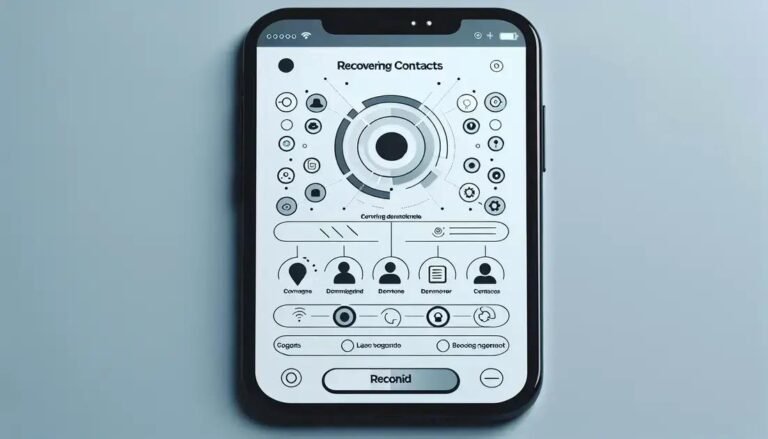How to Recover Old Email Accounts on Yahoo, Outlook and Others
Old email accounts often sit forgotten, gathering digital dust. Have you ever wondered what’s lurking in yours? Going through these accounts can be surprisingly insightful! You might find hidden gems or, on the flip side, potential security risks that need your attention.
Imagine this: an unread email revealing a crucial piece of information or a forgotten account linked to important subscriptions. These dormant accounts are like treasure troves of past communications, and exploring them is an adventure in understanding your digital footprint.
But here’s the rub—managing old email accounts isn’t just about nostalgia. It’s about ensuring your online security and protecting your personal information. So, let’s dig into why taking a closer look at these accounts is essential in today’s digital age.
Understanding The Importance Of Old Email Accounts
Many people overlook the importance of old email accounts, considering them irrelevant over time. However, these accounts can provide a wealth of information and historical data. They help map out personal and professional communications, offering a window into past interactions.
Old email accounts can hold key information such as past conversations, work products, and even forgotten contacts that could prove valuable today. Maintaining access to these accounts means preserving documents and discussions that might be needed for record-keeping or nostalgia.
Hidden Risks
Despite their usefulness, old emails can also harbor risks. Unused accounts often fall prey to hackers due to typically weaker security measures. This can lead to unauthorized access to sensitive information. It’s essential to secure these accounts or shut them down if they’re no longer needed.
Best Practices
- Regularly review and update security settings.
- Use strong, unique passwords.
- Delete accounts that are no longer in use to minimize security risks.
Benefits of Regular Maintenance
Keeping your email accounts organized and secure not only protects your personal information but also ensures you have quick access to important documents and contact information when needed. Regular maintenance can prevent the clutter from becoming overwhelming and help in retrieving information efficiently.
Identifying Common Risks In Old Email Accounts
Old email accounts are often neglected, which can lead to a range of security issues. These accounts, if left unchecked, may become easy targets for hackers. One of the most common risks is unauthorized access. If your account is compromised, sensitive information such as passwords, personal details, and financial data can be stolen.
Another risk involves the build-up of spam and phishing scams. Old accounts are more vulnerable to receiving deceptive emails, which can trick users into revealing sensitive information or unknowingly downloading malware onto their devices.
Additionally, identity theft is a significant threat associated with old email accounts. Hackers can use the data available in these accounts to impersonate the email owner and commit fraud, making it crucial to secure and monitor these accounts actively.
Preventative Measures
- Regularly change passwords and use multi-factor authentication.
- Unsubscribe from unwanted mailing lists to reduce spam.
- Set up security alerts for unusual login activities.
Take time to conduct regular security checks on your accounts. Ensure that recovery information is up-to-date and that unused accounts are deleted to minimize risks.
Strategies For Safeguarding Your Old Email Accounts
Safeguarding your old email accounts is crucial to protect sensitive information and prevent unauthorized access. Start by implementing strong passwords. Combine upper and lower case letters, numbers, and symbols for a robust password that is difficult to crack.
Use multi-factor authentication (MFA) whenever possible. This adds an extra layer of security by requiring additional verification steps beyond just the password, such as a code sent to your phone.
Regularly review your account activity. Check for any unusual logins or changes in your account settings. Enable alerts for suspicious activities to stay informed about potential security threats.
Organizing Your Inbox
- Delete unnecessary emails to reduce clutter and improve account performance.
- Organize important emails into folders for better accessibility.
- Regularly back up critical emails to ensure you don’t lose valuable information.
Consider using email filtering tools to automatically sort incoming messages and protect against spam and phishing attacks. These tools can help identify and remove emails that pose a risk, keeping your inbox safer.
Innovative Uses For Old Email Addresses
Old email addresses may seem obsolete, but they can have innovative uses. One way to utilize them is for organizational purposes. By maintaining an old email account, you can keep all correspondence related to past projects or activities in one place, making it a valuable resource for reference.
Another creative use is for testing purposes. If you’re wary about providing your main email to unfamiliar websites or apps, an old email address can serve as a buffer. This helps keep your primary inbox free from potential spam or security risks.
For those who run businesses or manage teams, old email addresses can serve as training tools. By analyzing past communications, new team members can learn from historical data, understanding how decisions were made and projects were handled.
Subscription Management
- Use old email addresses for newsletters and subscriptions, preventing clutter in your main inbox.
- Maintain a clear view of all subscriptions by keeping them in one place.
- Easily identify and cancel unwanted services without involving your primary emails.
Old email accounts can also be valuable for archive purposes. Preserving old emails ensures that important documents, contacts, and conversations remain accessible for future needs.
FAQ – Common Questions About Old Email Accounts
Why should I keep track of my old email accounts?
Old email accounts can contain important historical data and help in managing past communications effectively.
How can I improve the security of my old email accounts?
Use strong passwords, enable multi-factor authentication, and regularly monitor your account activity for suspicious logins.
Can I use old email addresses for something useful?
Yes, old emails can be used for subscription management, testing purposes, and archiving important information.
What are the risks associated with old email accounts?
Old accounts can be vulnerable to hacking, phishing scams, and identity theft due to outdated security measures.
How do I manage spam in my old email accounts?
Utilize email filtering tools to automatically sort out spam and unsubscribe from unwanted mailing lists.
Can an old email account be used to protect my primary inbox?
Yes, you can use old emails to sign up for services with potential risks, safeguarding your main inbox from clutter and spam.






